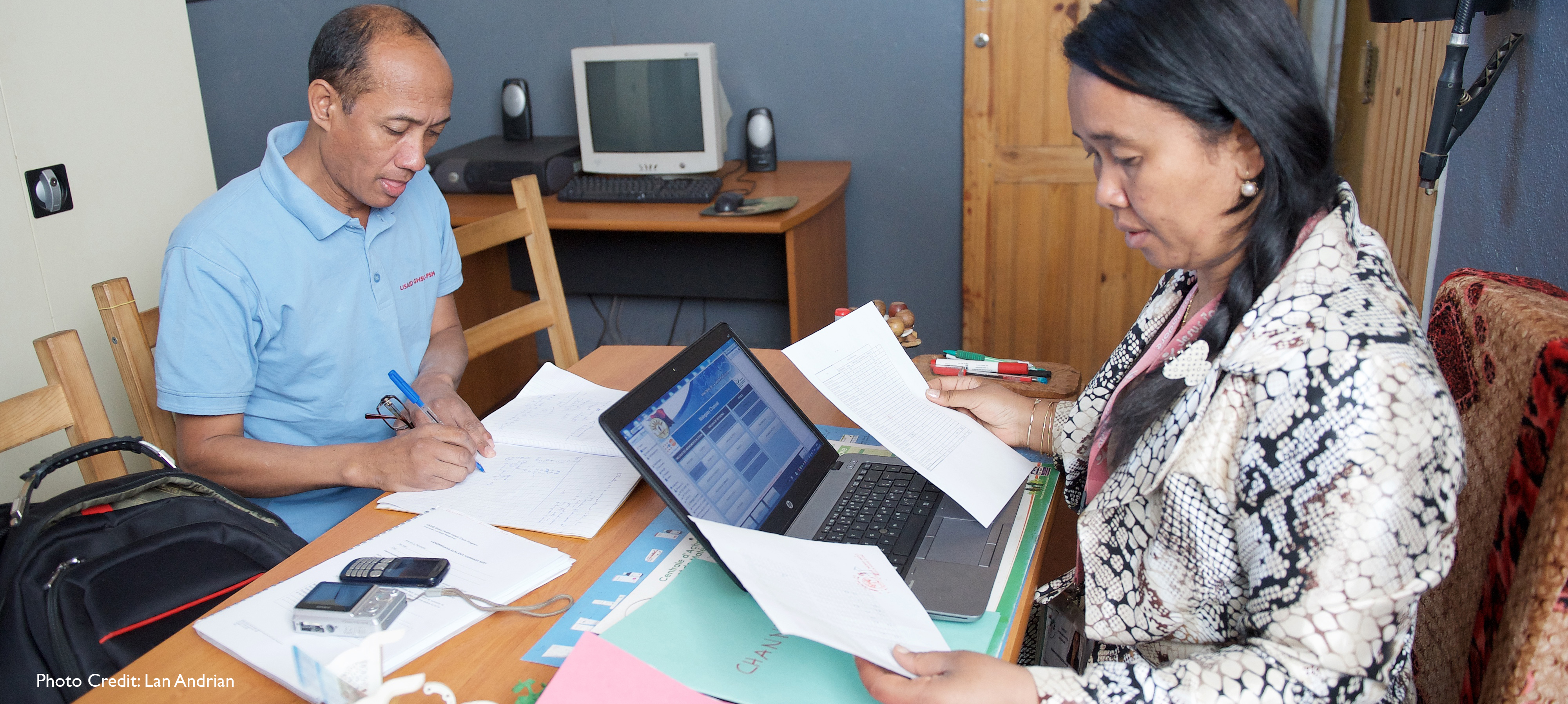
Technology can be a game changer in maximizing efficiencies up and down the health supply chain, from estimating procurement needs to ensuring prompt delivery of essential medicines and supplies. Yet even the most cutting-edge tools can be rendered ineffective without trained staff to use and maintain them.
Such was the case in Madagascar, where health commodity warehouse staff had access to a software program called Malagasy Channel, which automates order tracking and enables users to send reports and requisition orders to the central warehouses. With more streamlined and timely reporting, warehouse teams are better able to manage commodity stock levels and deliver crucial supplies for malaria, family planning, and maternal and child health.
In February 2017, the Ministry of Health (MOH) established Malagasy Channel as the official standard LMIS software in Madagascar. As of April 2017, however, only 28 percent of Madagascar’s 114 districts were using it to record and report data.
While the MOH had conducted several trainings on the software, the USAID Global Health Supply Chain Program-Procurement and Supply Management project (GHSC-PSM) observed that Malagasy Channel was complicated to use, especially for people with limited information technology (IT) knowledge.
To address this, GHSC-PSM worked with the MOH to simplify Malagasy Channel, reducing unnecessary functions by 35 percent. In May, GHSC-PSM and the MOH pre-tested the new, streamlined version of the software in four districts: two districts with excellent reporting rates and two others with poor performance. Based on learnings from these different user settings, GHSC-PSM made additional adjustments to the training curricula, modules, and job aids to better align with the competencies of district pharmacy staff.
Working with UNFPA; MOH directors; the Directorate of Pharmacy, Laboratory and Traditional Medicines (DPLMT); Directorate of Management Information Systems (DSI); and Secretary General of Health, GHSC-PSM trained 100 percent of district staff to use the updated software program.
Ratovoherimanantsoa Basile, a service provider for 16 years in Toamasina II, was one of the trainees. The warehouse where Basile works provides supplies to 37 community-managed pharmacies. According to Basile, sending stock reports to the central level had been difficult for years due to problems with the Malagasy Channel software. After being trained on IT basics and the software, Basile was able to integrate all data from his district into Malagasy Channel, which has helped to improve stock management and overall planning.
"Before this initiative, the software was not even installed on the computer and no data had been recorded for seven years," Basile says. “[Malagasy] Channel helps us better manage [the] stock situation of the health facilities and send our data quickly to anticipate stock outs.”
So far, GHSC-PSM’s team has trained 274 people (133 men and 141 women) in 22 regions and 114 districts. GHSC-PSM also provides ongoing technical assistance to trainees through Team Viewer software, which allows project staff access to stock managers' computers to answer user questions and resolve software issues.
Since trainings began in April, the Madagascar data reporting rate for Malagasy Channel increased from 28 percent to more than 80 percent at the end of July.
These trainings are part of GHSC-PSM’s technical assistance to the MOH to strengthen the logistics management system in Madagascar and contribute to the achievement of timely, reliable access to quality health commodities.